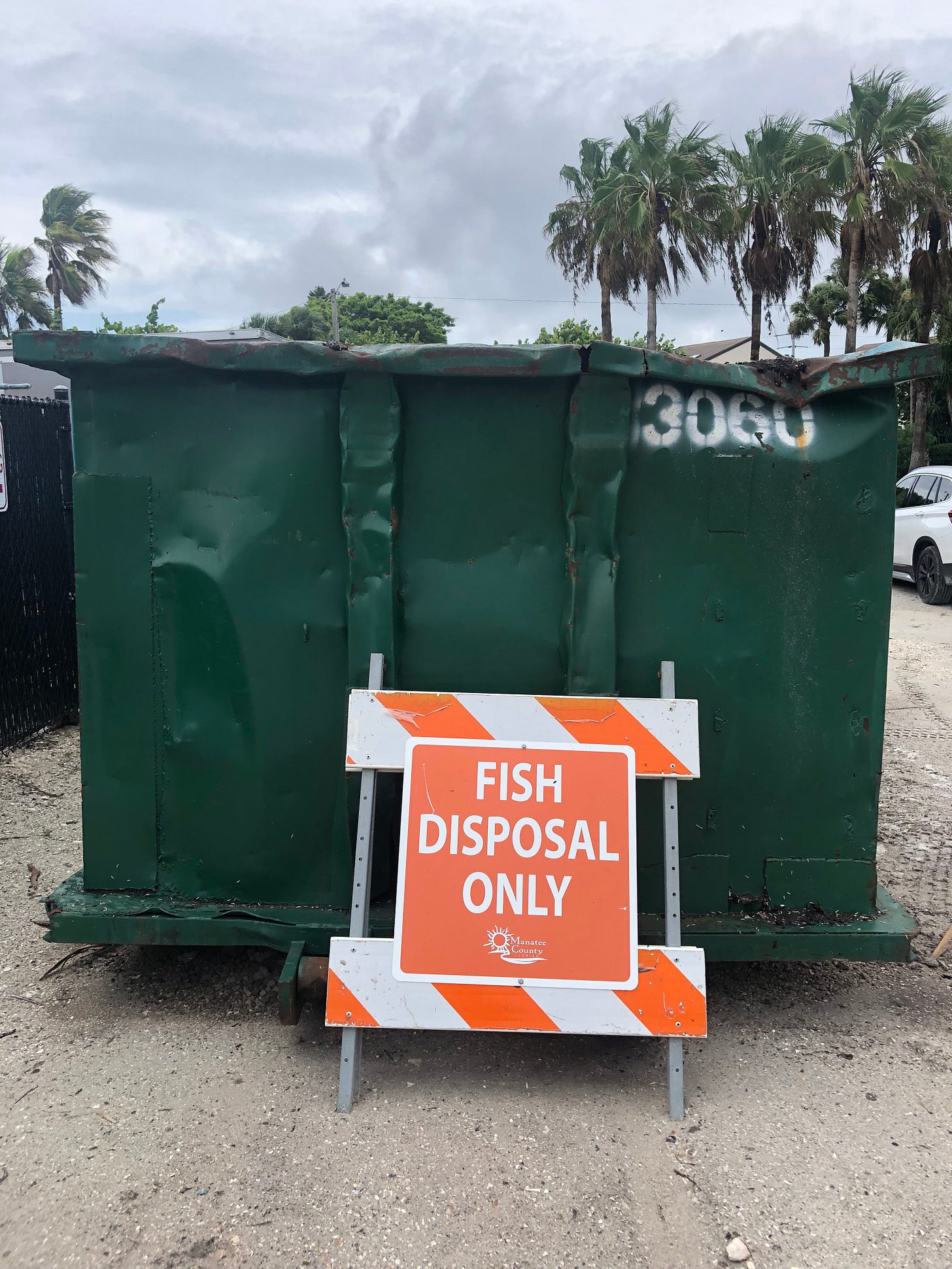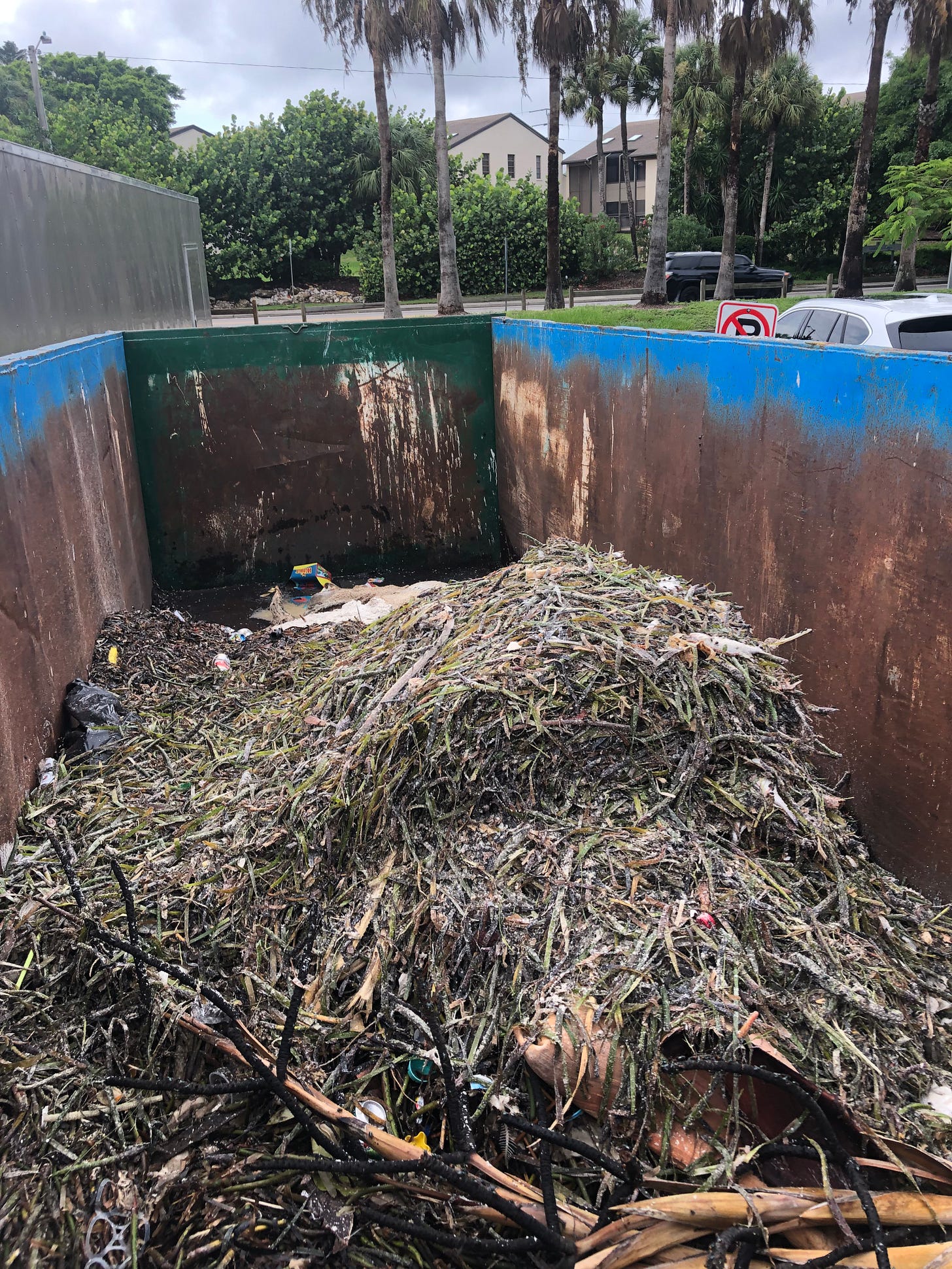Red tide leaves a big mess on Anna Maria Island. But picking up the dead fish is not the only solution
Manatee County 'attacking red tide from the land, sea and air'
The governmental and political campaign in Manatee County to put red tide in its place — that is, away from the eyes, noses, throats and minds of tourists and others — is at full speed. Just get up early and go to the beach to see for yourself.
U.S. Rep. Vern Buchanan and Mote Marine held public events this week to highlight that something, anything, is being done to wish away this year’s red tide before apocalyptic conditions experienced in Pinellas County and elsewhere spread here, as they did during the last major red tide in 2018-19.
And on Tuesday, in a briefing of local officials, County Administrator Scott Hopes used war-like rhetoric to describe the county’s effort to mitigate the effects of red tide, which currently stretches in varying levels along a large portion of Southwest Florida’s Gulf coast.
All this comes almost three years to the date when red tide slammed into Anna Maria Island and the rest of Manatee County, stinking up the water and air, making us cough and sneeze, dumping tons of dead fish and other marine life onto local beaches and into inland canals and taking a big bite out of local tourism.
This year’s red tide, at least in Manatee, has been nothing like we saw in 2018. That’s in no small part to how county government, much earlier than it did three years ago, has mobilized various resources to monitor red tide and clean up its mess before too many people notice.
On Wednesday, a little before 9:30 a.m., I took a walk along the stretch of Holmes Beach north of Manatee Public Beach toward the Martinque condo towers. The water and air seemed OK, and I saw only a handful of dead fish on the sand, far fewer than last Wednesday when I walked on the same sand.
As evidenced by the fresh tractor tracks winding between several sea turtle nests, the county’s beach raker had already scooped up any seaweed and fish carcasses dumped earlier by the pounding surf. Conditions on the stretch of beach south of Bean Point, where I was passed by a southbound beach raker, were similarly clean, almost pristine.
Where had all the mess gone?
Back at the Public Beach, nestled in a corner of the parking lot to make it difficult to notice, sat a large green dumpster, reserved for whatever the raker scooped off the beach. When I peeked over of the lip of the dumpster, I saw mainly seaweed — but the horrid stench was not from seaweed. The flies, however, seemed to enjoy it.


At Tuesday’s meeting of the Manatee County Council of Governments, Administrator Hopes said the county had placed dumpsters at several locations, including at the Public Beach and at Coquina Beach. In the past week, Hopes said, about 10 tons of “biomass” had been collected and dumped at the landfill.
“We are trying to get this stuff picked up before our tourists and residents confront it,” he said.
Hopes said the county also has recruited boaters, including some shrimp boat captains, to collect dead fish from the water before it land ashore. And from the air, officials were using drones to track plumes of red tide in the Gulf of Mexico.
“We are attacking red tide from the land, sea and air,” Hopes said in a video played during his presentation during the COG meeting.
The mitigation efforts, for now, appear to be working, if only because Anna Maria Island and the rest of the county have been spared the high levels of red tide found off Pinellas County to the north and Sarasota County to the south.
Absent from the discussion at the COG meeting, and in accounts of the separate events hosted by Buchanan and Mote, was much discussion on what can be done to prevent red tide every three years or so from polluting the local environment and threatening out tourism-driven economy.
Red tide, as local tourism backers reminded me this week, is naturally occurring. But some scientists say it can be super-charged by nutrients, like the nitrogen and phosphorus found in fertilizers — and that was in the dirty water that spilled from Piney Point last spring.
Buchanan said Monday there needs to be better enforcement of existing water protection laws but not new laws. And on Tuesday, Gov. Ron DeSantis, Buchanan and other officials applauded Mote’s stand-funded efforts to find ways to stop red tide but only after it has bloomed.
Stopping Mother Nature from unleashing red tide cannot be easy, but similar efforts to reassure the public were common during and after the 2018 red tide. Congress and the Florida Legislature even boosted funding for research and to strengthen environmental protections.
But here we are again.
You can scoop up all the dead fish each morning before the tourists hit the beach, but that is not a solution to the red tide problem, just a way to, at least temporarily, reassure the public that something is being done. (Of course, right now there is no way to wipe out the dirty water and air that sometimes accompanies the dead fish.)
This is not a criticism of what the county is doing. In fact, that’s probably what the county should be doing to guard against decaying fish becoming yet another health hazard in the community and any misperceptions of how bad red tide really is. That, as it was Wednesday morning, it’s still OK on most days to go to the beach and spend your money.
Just don’t confuse the cleanup with what needs to be done to prevent a bigger mess in the future.





